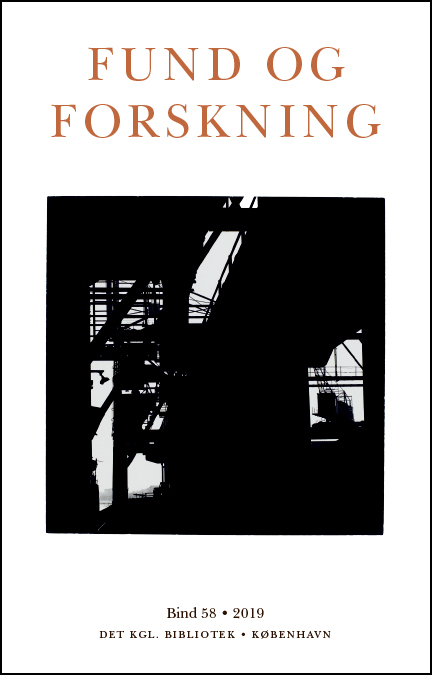Veje til viden om børns bøger og læsning 1750-1850 via Det Kgl. Bibliotek
DOI:
https://doi.org/10.7146/fof.v58i0.125296Resumé
Charlott e Appel og Nina Christensen: Avenues to Knowledge about Children’s Books and Reading 1750-1850 via The Royal Library
Based on the Royal Danish Library’s collections, the article identifies paths to reading material published for children in Denmark c. 1750-1850, as well as to children’s experiences with books and the world of books in homes, schools and on the book market. This was a period of major changes with regard to the number of publications for children, to subject choices and equipment, and to the reading cultures, in which children took part. By focusing on the use of books in practice, including translated literature, books in foreign languages, as well as reading material other than books, this article presents an alternative to previous research, which prioritised specific media and genres, especially fiction and first editions of books by Danish authors.
The article begins with a brief introduction to the phenomenon of doing archival research, and Maria Tamboukou’s concept of ‘researcher’s cut’ is introduced in dialogue with the term ‘research narratives’. These concepts can form the basis for reflections on how new narratives as well as new archives are created by researchers when interacting with space and matter in the archive. The first main section deals with books for children from c. 1750 to 1850 in the Royal Danish Library. ‘Childrens books’ did not exist as a separate category at the time when the systematic catalogues of the library were created, but the researchers’ establishment of a new database has made it possible to identify and present a much larger corpus of books for children than previously known. The second main section shows how it is possible to gather information about printed matter not held by the Royal Danish Library. In the third main section, it is demonstrated how a wish to identify sources to book usage in practice has led to some of the library’s special collections, including the Manuscript Collection and the Collection of Map, Pictures and Photographs, as well as to collections only recently merged with the Royal Danish Library. Autobiographies are also presented as an important source, not least when it comes to understanding the use of books by children with different social backgrounds. Finally, it is pointed out that since books for children should be perceived and studied as a transnational phenomenon, the systematic digitalisation of the publications will be of crucial importance to future Danish and international research, as well as to teaching and dissemination on the basis of this previously underexposed part of the Royal Danish Library.


